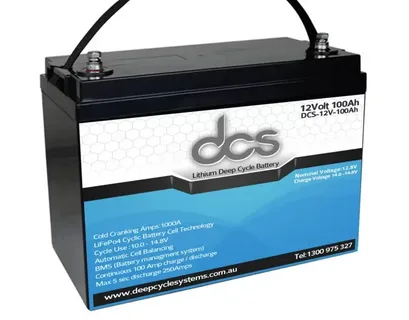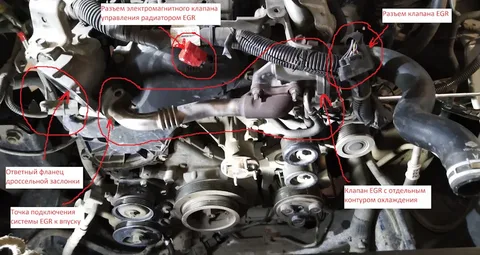Blockchain technology, celebrated as one of the most transformative innovations of the 21st century, promises unparalleled transparency, security, and efficiency across various industries. Yet, despite its numerous advantages, blockchain faces a significant challenge: interoperability. Siloed blockchain ecosystems often operate in isolation, limiting their potential. This blog explores the importance of blockchain interoperability, the challenges associated with it, and strategies to navigate these fragmented ecosystems.
The Significance of Blockchain Interoperability
Blockchain interoperability refers to the ability of different blockchain networks to communicate and share data seamlessly. This capability is crucial for several reasons:
- Enhanced Collaboration: Interoperability fosters collaboration among different blockchain networks, allowing them to share resources and information. This synergy can drive innovation and create more robust solutions.
- Increased Efficiency: Seamless data exchange between blockchains can eliminate redundancies, reduce costs, and improve operational efficiency. It streamlines processes that would otherwise be time-consuming and complex.
- Scalability: Interoperable blockchain networks can handle larger volumes of transactions and data, enhancing their scalability. This is particularly important as the adoption of blockchain technology continues to grow.
- Broader Adoption: By enabling different blockchain networks to work together, interoperability can drive broader adoption of blockchain technology across various industries.
Challenges in Achieving Blockchain Interoperability
While the benefits of blockchain interoperability are clear, achieving it is not without challenges. Here are some of the key obstacles:
- Technical Incompatibility: Different blockchain networks often use distinct protocols, consensus mechanisms, and data structures. Bridging these technical differences requires sophisticated solutions.
- Security Concerns: Ensuring secure data exchange between blockchain networks is paramount. Interoperability solutions must address potential vulnerabilities and protect against cyber threats.
- Regulatory Issues: Different regions have varying regulatory frameworks for blockchain technology. Navigating these legal complexities can be challenging for interoperable blockchain networks.
- Lack of Standardization: The absence of universal standards for blockchain interoperability hinders seamless integration. Developing and adopting common standards is essential for widespread interoperability.
Strategies for Navigating Siloed Blockchain Ecosystems
To overcome the challenges of siloed blockchain ecosystems, several strategies can be employed:
1. Cross-Chain Bridges
Cross-chain bridges are protocols that enable the transfer of assets and data between different blockchain networks. These bridges act as intermediaries, facilitating communication and transactions between otherwise isolated blockchains. Examples include:
- Polkadot: Polkadot’s relay chain allows multiple blockchains to connect and share information securely.
- Cosmos: Cosmos enables interoperability through its Inter-Blockchain Communication (IBC) protocol, allowing blockchains to exchange data and assets.
2. Interoperability Standards
Developing and adopting interoperability standards is crucial for seamless integration. Organizations like the Blockchain Interoperability Alliance (BIA) work towards establishing common protocols and standards. These standards ensure that different blockchain networks can communicate effectively, regardless of their underlying technologies.
3. Decentralized Oracles
Decentralized oracles act as bridges between blockchain networks and the external world. They provide reliable data feeds and enable smart contracts to access off-chain information. By facilitating data exchange, decentralized oracles contribute to blockchain interoperability. Prominent examples include Chainlink and Band Protocol.
4. Atomic Swaps
Atomic swaps are smart contracts that enable direct peer-to-peer exchanges of assets between different blockchain networks without the need for intermediaries. This approach enhances security and reduces reliance on centralized exchanges. Atomic swaps are particularly useful for cryptocurrency exchanges, ensuring seamless interoperability.
5. Federated Blockchain Networks
Federated blockchain networks consist of multiple interconnected blockchains, each operated by a different entity. These networks collaborate while maintaining their individual autonomy. Hyperledger Fabric and Corda are examples of federated blockchain frameworks that support interoperability.
6. Middleware Solutions
Middleware solutions act as intermediaries, facilitating communication between different blockchain networks. These solutions abstract the complexities of blockchain interoperability, providing developers with tools to integrate various blockchains. Examples include Wanchain and Ark.
7. Custom Software Development
Partnering with a custom software development company in Dubai or other tech hubs can be a game-changer. These companies specialize in creating tailored solutions that address specific interoperability challenges. By leveraging their expertise, organizations can navigate the complexities of siloed blockchain ecosystems more effectively.
Case Studies: Successful Interoperability Implementations
To illustrate the practical applications of blockchain interoperability, let’s explore a few case studies:
Case Study 1: Polkadot and Ethereum
Polkadot, a blockchain platform designed to enable interoperability, successfully connected with Ethereum through its parachain architecture. This connection allowed decentralized applications (dApps) on Ethereum to interact with Polkadot’s ecosystem. As a result, developers could leverage the unique features of both platforms, enhancing the functionality of their dApps.
Case Study 2: Cosmos and Binance Chain
Cosmos, through its IBC protocol, established interoperability with Binance Chain. This integration enabled seamless token transfers and data exchange between the two networks. Users could move assets between Cosmos and Binance Chain without relying on centralized exchanges, ensuring a more decentralized and secure process.
Case Study 3: Chainlink and Multiple Blockchains
Chainlink, a decentralized oracle network, achieved interoperability by connecting with various blockchain networks, including Ethereum, Binance Smart Chain, and Polkadot. By providing reliable data feeds to smart contracts across different blockchains, Chainlink enhanced the functionality and interoperability of decentralized applications.
Future Trends in Blockchain Interoperability
As blockchain technology continues to evolve, several trends are shaping the future of interoperability:
1. Increased Adoption of Interoperability Protocols
The adoption of interoperability protocols like Polkadot’s relay chain and Cosmos’s IBC is expected to grow. These protocols will become the foundation for connecting various blockchain networks, fostering collaboration and innovation.
2. Enhanced Security Measures
Security remains a top priority in blockchain interoperability. Future solutions will focus on enhancing security measures, including advanced cryptographic techniques and secure data exchange protocols. These measures will protect against potential vulnerabilities and cyber threats.
3. Standardization Efforts
Efforts to establish universal standards for blockchain interoperability will gain momentum. Industry organizations, consortiums, and regulatory bodies will collaborate to develop and promote common protocols and standards. Standardization will facilitate seamless integration and drive broader adoption of interoperable blockchain networks.
4. Interoperable DeFi Ecosystems
Decentralized Finance (DeFi) is a rapidly growing sector within the blockchain industry. Interoperability will play a crucial role in the development of interoperable DeFi ecosystems. By connecting different DeFi platforms, users will have access to a wider range of financial services and opportunities.
5. Cross-Industry Collaboration
Blockchain interoperability will extend beyond individual industries, fostering cross-industry collaboration. For example, supply chain blockchains can integrate with financial blockchains to enable seamless trade finance processes. This collaboration will unlock new possibilities and drive innovation across sectors.
Conclusion
Navigating through siloed blockchain ecosystems is a critical challenge that must be addressed to unlock the full potential of blockchain technology. Interoperability is the key to achieving this goal, enabling seamless communication and data exchange between different blockchain networks.
While technical, security, regulatory, and standardization challenges exist, various strategies and solutions can help overcome these obstacles. Cross-chain bridges, interoperability standards, decentralized oracles, atomic swaps, federated blockchain networks, middleware solutions, and custom software development guide for all play vital roles for development services in 2025
Case studies of successful interoperability implementations, such as Polkadot and Ethereum, Cosmos and Binance Chain, and Chainlink, demonstrate the practical benefits of interoperability. These examples highlight how different blockchain networks can collaborate to create more robust and innovative solutions.
Looking ahead, the future of blockchain interoperability is promising. Increased adoption of interoperability protocols, enhanced security measures, standardization efforts, interoperable DeFi ecosystems, and cross-industry collaboration are key trends that will shape the future of blockchain interoperability.
By navigating through siloed blockchain ecosystems and embracing interoperability, organizations can harness the true potential of blockchain technology. Partnering with a custom software development company in Dubai can provide the expertise needed to develop tailored solutions that address specific interoperability challenges. Together, we can build a more connected, efficient, and innovative blockchain landscape.
About Code Brew Labs
At Code Brew Labs, a leading custom software development company in Dubai, we specialize in creating innovative solutions that drive business success. Our team of experts is dedicated to helping organizations navigate the complexities of blockchain interoperability. Contact us today to learn how we can help you achieve your blockchain goals.




